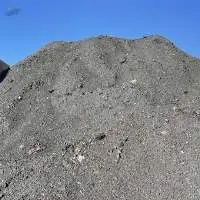
Whatâ??s the Silicon Carbide(Sic) heating element?
The SiC electrothermal element is a rod-shaped non-metallic thermoelectric element which is made of high quality green SiC as the main raw material through processing, high temperature silicification and recrystallization. Compared with metallic electric heating elements, this element has the characteristics of high operating temperature, oxidation resistance, corrosion resistance, long service life, small deformation, convenient installation and maintenance.
Supplier: Aluminium ( ingots, t bars, sows, rods), copper (cathodes, cakes, billets, ingots, rods), lead (ingots), nickel (cathodes both cut and uncut briquettes, pellets, discs, etc.), tin (ingots, etc.), zinc (ingots both regular size and jumbos), steel billets (all types including crc, hrc, hdgc, plates, sheets), concentrates and ores for above items including bauxite, manganese, clinker and iron ores etc), scraps of above items including hms 1&2 and steel scraps
Buyer: Aluminium ( ingots, t bars, sows, rods), copper (cathodes, cakes, billets, ingots, rods), lead (ingots), nickel (cathodes both cut and uncut briquettes, pellets, discs, etc.), tin (ingots, etc.), zinc (ingots both regular size and jumbos), steel billets (all types including crc, hrc, hdgc, plates, sheets), concentrates and ores for above items including bauxite, manganese, clinker and iron ores etc), scraps of above items including hms 1&2 and steel scraps
-White Charcoal, also known as Binchotan, is a type of hardwood charcoal that has traditionally been produced in Japan. It is called White charcoal because of its light color and unique benefits that create economic value compared to traditional black charcoal. -Binchotan is the purest charcoal on earth by the highest carbon proportion (more than 92%) and is completely odorless, and smokeless when burning. White Charcoal is more difficult to ignite than black charcoal; however, it burns hotter and longer. When hitting the pieces together, it gives a light metallic sound. The white charcoal doesnot break into small pieces while burning. USAGES Food grilled over white charcoal retains its natural flavor and moisture because it burns cleanly and without flames. It is popular in high-end restaurants and mostly in Korea and Japan. In addition, binchotan has many uses such as water purification, exhaust filter, deodorant, skin care, metallurgy, used in battery manufacture...
We are glad to propose 500 MT of stain less steel mill scale. Mill scale is formed on the outer surfaces during by the hot rolling lamination of stainless-steel products. At a visual inspection the material is a hard brittle sand and is mainly composed of iron oxides, mostly ferric, and is bluish black in colour, but it also contains considerable alloying elements such as chromium and nickel. The recovery ratio after melting in furnace for the most valuable alloy elements is: - Ni: 3.5 - 4.5% - Cr: 6-8% From the chemical and physical analysis performed on the scrap, and according to the European environmental rules, the material has been classified as a special non dangerous waste, listed in green list. In particular the mill scale can be classified as follows: Waste code: 10 02 10 The material is stored on cemented flooring, and it can be loaded loose in tipper trucks or containers. Chemical analysis of the material is available on request.
We are able to supply Tin in many forms including LME registered and non registered, ingots, slabs, bars, foil, granules, powder, anodized activated powder, shot, wire, sticks, ingots, and “mossy tin”. Tin is a silvery-white metal, is malleable, somewhat ductile, and has a highly crystalline structure. The element has two colours, with a cubic structure which changes at allotropic forms. On warming it is grey, the ordinary form of the metal. When Tin is cooled below 13.2°C, it changes slowly from white to grey or tetragonal structure. This change is affected by impurities such as Aluminium and Zinc, and can be prevented by small additions of Antimony or Bismuth.
We put forward a high quality of assortment of Nickel which is available in many forms including LME registered and non registered cathodes, cut cathodes, briquettes, pellets, disks, shots, granules, foil, powder, flakes, sheet, wire, mesh, spheres, “evaporation slugs”, and rods. Nickel is a silvery white metal that takes on a high polish. It is hard, malleable, ductile, somewhat ferromagnetic, and a fair conductor of heat and electricity



